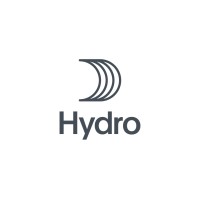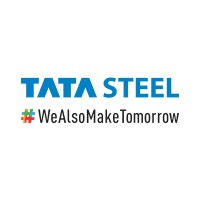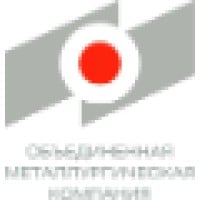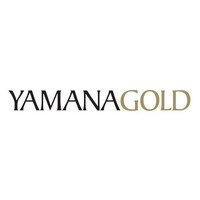
Norsk Hydro Company Cyber Security Posture
hydro.comHydro is a leading industrial company that builds businesses and partnerships for a more sustainable future. We develop industries that matter to people and society. Since 1905, Hydro has turned natural resources into valuable products for people and businesses, creating a safe and secure workplace for our 31,000 employees in more than 140 locations and 40 countries. Today, we own and operate various businesses and have investments with a base in sustainable industries. Hydro is through its businesses present in a broad range of market segments for aluminium, energy, metal recycling, renewables and batteries, offering a unique wealth of knowledge and competence. Hydro is committed to leading the way towards a more sustainable future, creating more viable societies by developing natural resources into products and solutions in innovative and efficient ways.
Norsk Hydro Company Details
norsk-hydro
12792 employees
347543.0
212
Mining
hydro.com
10
NOR_9295674
In-progress
Between 900 and 1000
This score is AI-generated and less favored by cyber insurers, who prefer the TPRM score.
 Norsk Hydro Global Score
Norsk Hydro Global Score.png)

Norsk Hydro Company Scoring based on AI Models
| Model Name | Date | Description | Current Score Difference | Score |
|---|---|---|---|---|
| AVERAGE-Industry | 03-12-2025 | This score represents the average cybersecurity rating of companies already scanned within the same industry. It provides a benchmark to compare an individual company's security posture against its industry peers. | N/A | Between 900 and 1000 |
Norsk Hydro Company Cyber Security News & History
| Entity | Type | Severity | Impact | Seen | Url ID | Details | View |
|---|---|---|---|---|---|---|---|
| Norsk Hydro | Breach | 100 | 5 | 03/2023 | NOR505050724 | Link | |
Rankiteo Explanation : Attack threatening the organization’s existenceDescription: Norsk Hydro, one of the world's largest aluminum companies, faced a severe cyberattack that halted production lines at some of its 170 plants and pushed other facilities to switch from computer to manual operations. The incident, caused by LockerGoga ransomware, began with an infected email and eventually affected all 35,000 employees across 40 countries, locking files on thousands of servers and PCs. The financial impact neared $71 million. Despite the crisis, Norsk Hydro refused to pay the ransom, opting for transparency and collaborating with Microsoft's cybersecurity team to restore operations. This approach, contrasting the typical secrecy following such breaches, earned global commendation. | |||||||
| Norsk Hydro | Breach | 100 | 5 | 03/2019 | NOR307050724 | Link | |
Rankiteo Explanation : Attack threatening the organization’s existenceDescription: In March, Norsk Hydro, one of the world's largest aluminum producers, fell victim to a ransomware attack that brought production to a standstill at some of its 170 plants, forcing others to switch to manual operations. The breach ultimately impacted all 35,000 employees across 40 countries, with the financial toll nearing $71 million. The attack commenced when an employee inadvertently opened a malicious email from a trusted customer. LockerGoga ransomware encrypted files across thousands of the company’s servers and PCs, displaying a ransom note demanding payment in bitcoins for decryption. Norsk Hydro responded by refusing to pay the ransom, collaborating with Microsoft's cybersecurity team to restore operations, and maintaining full transparency about the breach to help others learn from their experience. | |||||||
| Norsk Hydro | Cyber Attack | 100 | 5 | 03/2019 | NOR451042824 | Link | |
Rankiteo Explanation : Attack threatening the organization’s existenceDescription: In March 2019, Norsk Hydro, one of the world's largest aluminum companies, suffered a severe ransomware attack that halted production lines and forced some of its 170 plants to switch from computer to manual operations. The breach impacted all 35,000 employees across 40 countries, locking files on thousands of servers and PCs. The financial toll approached $71 million. The breach began when an employee unknowingly opened an infected email from a trusted customer, leading to a widespread Lockergoga ransomware infection. Despite the havoc, Norsk Hydro chose not to pay the ransom, instead opting to restore data from backup servers and enlisted Microsoft's cybersecurity team for support. The company's transparent response to the cyberattack, including daily webcasts and press conferences, was widely praised. | |||||||
| Norsk Hydro | Cyber Attack | 100 | 5 | 03/2023 | NOR442050724 | Link | |
Rankiteo Explanation : Attack threatening the organization’s existenceDescription: In March, Norsk Hydro, one of the world's largest aluminum companies, experienced a significant cyberattack that shut down production lines across its 170 plants, and led to a switch from computer to manual operations at some of its facilities. The attackers used a malware called 'LockerGoga' to encrypt files on thousands of servers and PCs, affecting all 35,000 employees in 40 countries. The financial impact of the attack reached approximately $71 million. The breach occurred due to an employee opening an infected email, leading to a severe compromise of the company's IT infrastructure. Despite the extensive damage, Norsk Hydro chose not to pay the ransom and instead worked on restoring their data from backups and improving their cybersecurity posture with the help of Microsoft's cybersecurity team. | |||||||
| Norsk Hydro | Ransomware | 100 | 6 | 03/2019 | NOR234225322 | Link | |
Rankiteo Explanation : Attack threatening the economy of a geographical regionDescription: Norwegian aluminum producer Norsk Hydro fell victim to a ransomware attack in March 2019. The attack affected its world wide operations as the company took preventive steps to contain the attack. The attack cost about 800 million and 1 billion to the company as the attackers logged employees out of company systems and made it impossible for them to work. | |||||||
| Norsk Hydro | Ransomware | 100 | 5 | 03/2020 | NOR423051324 | Link | |
Rankiteo Explanation : Attack threatening the organization’s existenceDescription: In March 2019, Norsk Hydro, a global aluminum company, was hit by LockerGoga ransomware affecting all 35,000 employees across 40 countries, disrupting production lines, and forcing manual operations. The financial impact was near $71 million as hackers deployed the ransomware through a trusted customer's infected email opened by a Norsk Hydro employee. Despite the severity, Norsk Hydro made three decisions: refusing to pay the ransom, collaborating with Microsoft’s cybersecurity team to restore operations, and maintaining transparency throughout the crisis. This approach of sharing their experience publicly received worldwide praise. | |||||||
| Norsk Hydro | Ransomware | 100 | 5 | 03/2021 | NOR416051424 | Link | |
Rankiteo Explanation : Attack threatening the organization’s existenceDescription: Norsk Hydro, a global aluminum company, experienced a severe ransomware attack that ceased operations at some of its 170 plants. The breach impacted all 35,000 employees across 40 countries by locking files on thousands of servers and PCs. Initiated by an infected email from a customer, the breach allowed hackers to plant LockerGoga ransomware, leading to financial damages nearing $71 million. The company's transparency and decision not to pay the ransom were acclaimed by security experts, and they leaned on Microsoft's cybersecurity team for recovery and restoration. | |||||||
| Norsk Hydro | Vulnerability | 100 | 5 | 03/2023 | NOR707050724 | Link | |
Rankiteo Explanation : Attack threatening the organization’s existenceDescription: Norsk Hydro, one of the world's largest aluminum companies, faced a significant cyberattack in March, affecting all 35,000 employees across 40 countries. An employee's opening of an infected email from a trusted customer initiated the breach, leading to the encryption of thousands of servers and PCs. This action rendered production lines at some of its 170 plants inoperable, with financial ramifications nearing $71 million. The incident, propelled by the ransomware LockerGoga, forced Norsk Hydro into emergency response, opting against paying the ransom and focusing on restoration and openness. Their strategy included engaging Microsoft’s cybersecurity team for recovery efforts and adopting a transparent communication approach about the breach's details and response, earning global security praise. | |||||||
| Norsk Hydro | Vulnerability | 100 | 5 | 03/2019 | NOR443050724 | Link | |
Rankiteo Explanation : Attack threatening the organization’s existenceDescription: Norsk Hydro, one of the world's largest aluminum companies, faced a severe cyberattack in March, ultimately affecting all 35,000 employees across 40 countries. The attack, initiated by an infected email from a trusted customer, caused production lines to halt and forced some facilities to switch to manual operations. The financial impact approached $71 million. Despite the scale of the attack, the company chose not to pay the ransom, instead opting to restore data from backup servers and seek assistance from Microsoft's cybersecurity team. Norsk Hydro's transparent response to the breach was praised for helping to expose the tactics of cyber criminals and possibly preventing similar future threats. | |||||||
Norsk Hydro Company Subsidiaries

Hydro is a leading industrial company that builds businesses and partnerships for a more sustainable future. We develop industries that matter to people and society. Since 1905, Hydro has turned natural resources into valuable products for people and businesses, creating a safe and secure workplace for our 31,000 employees in more than 140 locations and 40 countries. Today, we own and operate various businesses and have investments with a base in sustainable industries. Hydro is through its businesses present in a broad range of market segments for aluminium, energy, metal recycling, renewables and batteries, offering a unique wealth of knowledge and competence. Hydro is committed to leading the way towards a more sustainable future, creating more viable societies by developing natural resources into products and solutions in innovative and efficient ways.
Access Data Using Our API

Get company history
.png)
Norsk Hydro Cyber Security News
Hackers hit Norsk Hydro with ransomware. The company responded with transparency
Soon, they all knew its name: LockerGoga, a form of ransomware. It encrypted the files on desktops, laptops and servers throughout the company.
Norsk Hydro cyber attack could cost up to $75m
March 2019 ransomware attack could cost Norwegian aluminium giant up to $75m in the first half of the year, according to latest estimates.
Why the Norsk Hydro attack is a ‘blueprint’ for disruptive hacking operations
It's been a year since malicious code tore through the computer network of Norwegian aluminum giant Norsk Hydro, forcing the company to ...
The Norsk Hydro cyber attack is about money, not war
The company has been hit by a crippling ransomware attack that has forced it to switch some systems to manual operation.
Norsk Hydro cyber attack: What happened?
“Hydro subject to cyber-attack,” warned Oslo-headquartered Norsk Hydro ASA, one of the world's biggest aluminum producers, on Tuesday.
Hexion, Momentive and Norsk Hydro all hit by ransomware cyber attacks
Three large chemical manufacturing companies based in Norway and the US have fallen victim to ransomware attacks, after a program called ...
How to maintain full treasury operations in the midst of a cyber-attack? Follow Norsk Hydro’s gold standard response
On 19 March 2019, Hydro was the victim of a cyber-attack targeting and impacting their technology infrastructure across their worldwide organisation. The ...
What You Need to Know About the LockerGoga Ransomware
The systems of Norwegian aluminum manufacturing company Norsk Hydro were reportedly struck last Tuesday, March 19, by LockerGoga ransomware.
Norsk Hydro Ransomware Attack Is `Severe' But All Too Common
It infected an estimated 200,000 of the world's computers, starting a seven-day countdown to the destruction of data if victims didn't pay $300 ...

Norsk Hydro Similar Companies

Tata Steel
Tata Steel group is among the top global steel companies with an annual crude steel capacity of 34 million tonnes per annum. It is one of the world's most geographically-diversified steel producers, with operations and commercial presence across the world. The group (excluding SEA operations) record

Anglo American
Anglo American is a leading global mining company and our products are the essential ingredients in almost every aspect of modern life. Our portfolio of world-class competitive operations, with a broad range of future development options, provides many of the future-enabling metals and minerals for

United Metallurgical Company
United Metallurgical Company (OMK) is one of Russia’s largest producers of pipes, railway wheels and other steel products for energy, transport and industrial companies. OMK unites six large metallurgical enterprises: Vyksa Steel Works (Nizhny Novgorod region), Almetyevsk Pipe Plant (Tatarstan),

Sinosteel Corporation Limited
Sinosteel Corporation abbreviated as Sinosteel is a central enterprise under the administration of the State-Owned Assets Supervision and Administration Commission. There are 86 subsidiaries under the administration of Sinosteel, among which 63 are in China and 23 abroad. In 2009, the core businesse

Yamana Gold Inc.
Canadian-based gold producer with operations and projects in the Americas Producteur d’or basé au Canada avec des sites miniers et des projets dans les Amériques ------------------------------------------------------------------------------------------------------------------------------------------

Vale
We are a global mining company producing iron ore, pellets, and nickel, and we are committed to becoming one of the safest, most trustworthy mining company in the world. With a workforce of 120,000 employees, we work every day to transform natural resources into prosperity and sustainable developmen

Frequently Asked Questions (FAQ) on Cybersecurity Incidents
Norsk Hydro CyberSecurity History Information
Total Incidents: According to Rankiteo, Norsk Hydro has faced 9 incidents in the past.
Incident Types: The types of cybersecurity incidents that have occurred include ['Vulnerability', 'Cyber Attack', 'Breach', 'Ransomware'].
Total Financial Loss: The total financial loss from these incidents is estimated to be {total_financial_loss}.
Cybersecurity Posture: The company's overall cybersecurity posture is described as Hydro is a leading industrial company that builds businesses and partnerships for a more sustainable future. We develop industries that matter to people and society. Since 1905, Hydro has turned natural resources into valuable products for people and businesses, creating a safe and secure workplace for our 31,000 employees in more than 140 locations and 40 countries. Today, we own and operate various businesses and have investments with a base in sustainable industries. Hydro is through its businesses present in a broad range of market segments for aluminium, energy, metal recycling, renewables and batteries, offering a unique wealth of knowledge and competence. Hydro is committed to leading the way towards a more sustainable future, creating more viable societies by developing natural resources into products and solutions in innovative and efficient ways..
Detection and Response: The company detects and responds to cybersecurity incidents through {description_of_detection_and_response_process}.
Incident Details
Incident 1: Ransomware Attack
Title: {Incident_Title}
Description: {Brief_description_of_the_incident}
Date Detected: {Detection_Date}
Date Publicly Disclosed: {Disclosure_Date}
Date Resolved: {Resolution_Date}
Type: {Type_of_Attack}
Attack Vector: {Attack_Vector}
Vulnerability Exploited: {Vulnerability}
Threat Actor: {Threat_Actor}
Motivation: {Motivation}
Incident 2: Data Breach
Title: {Incident_Title}
Description: {Brief_description_of_the_incident}
Date Detected: {Detection_Date}
Date Publicly Disclosed: {Disclosure_Date}
Date Resolved: {Resolution_Date}
Type: {Type_of_Attack}
Attack Vector: {Attack_Vector}
Vulnerability Exploited: {Vulnerability}
Threat Actor: {Threat_Actor}
Motivation: {Motivation}
Common Attack Types: The most common types of attacks the company has faced are ['Breach', 'Cyber Attack', 'Ransomware', 'Vulnerability'].
Identification of Attack Vectors: The company identifies the attack vectors used in incidents through {description_of_identification_process}.
Impact of the Incidents
Incident 1: Ransomware Attack
Financial Loss: {Financial_Loss}
Data Compromised: {Data_Compromised}
Systems Affected: {Systems_Affected}
Downtime: {Downtime}
Operational Impact: {Operational_Impact}
Conversion Rate Impact: {Conversion_Rate_Impact}
Revenue Loss: {Revenue_Loss}
Customer Complaints: {Customer_Complaints}
Brand Reputation Impact: {Brand_Reputation_Impact}
Legal Liabilities: {Legal_Liabilities}
Identity Theft Risk: {Identity_Theft_Risk}
Payment Information Risk: {Payment_Information_Risk}
Incident 2: Data Breach
Financial Loss: {Financial_Loss}
Data Compromised: {Data_Compromised}
Systems Affected: {Systems_Affected}
Downtime: {Downtime}
Operational Impact: {Operational_Impact}
Conversion Rate Impact: {Conversion_Rate_Impact}
Revenue Loss: {Revenue_Loss}
Customer Complaints: {Customer_Complaints}
Brand Reputation Impact: {Brand_Reputation_Impact}
Legal Liabilities: {Legal_Liabilities}
Identity Theft Risk: {Identity_Theft_Risk}
Payment Information Risk: {Payment_Information_Risk}
Average Financial Loss: The average financial loss per incident is {average_financial_loss}.
Commonly Compromised Data Types: The types of data most commonly compromised in incidents are {list_of_commonly_compromised_data_types}.
Incident 1: Ransomware Attack
Entity Name: {Entity_Name}
Entity Type: {Entity_Type}
Industry: {Industry}
Location: {Location}
Size: {Size}
Customers Affected: {Customers_Affected}
Incident 2: Data Breach
Entity Name: {Entity_Name}
Entity Type: {Entity_Type}
Industry: {Industry}
Location: {Location}
Size: {Size}
Customers Affected: {Customers_Affected}
Response to the Incidents
Incident 1: Ransomware Attack
Incident Response Plan Activated: {Yes/No}
Third Party Assistance: {Yes/No}
Law Enforcement Notified: {Yes/No}
Containment Measures: {Containment_Measures}
Remediation Measures: {Remediation_Measures}
Recovery Measures: {Recovery_Measures}
Communication Strategy: {Communication_Strategy}
Adaptive Behavioral WAF: {Adaptive_Behavioral_WAF}
On-Demand Scrubbing Services: {On_Demand_Scrubbing_Services}
Network Segmentation: {Network_Segmentation}
Enhanced Monitoring: {Enhanced_Monitoring}
Incident 2: Data Breach
Incident Response Plan Activated: {Yes/No}
Third Party Assistance: {Yes/No}
Law Enforcement Notified: {Yes/No}
Containment Measures: {Containment_Measures}
Remediation Measures: {Remediation_Measures}
Recovery Measures: {Recovery_Measures}
Communication Strategy: {Communication_Strategy}
Adaptive Behavioral WAF: {Adaptive_Behavioral_WAF}
On-Demand Scrubbing Services: {On_Demand_Scrubbing_Services}
Network Segmentation: {Network_Segmentation}
Enhanced Monitoring: {Enhanced_Monitoring}
Incident Response Plan: The company's incident response plan is described as {description_of_incident_response_plan}.
Third-Party Assistance: The company involves third-party assistance in incident response through {description_of_third_party_involvement}.
Data Breach Information
Incident 2: Data Breach
Type of Data Compromised: {Type_of_Data}
Number of Records Exposed: {Number_of_Records}
Sensitivity of Data: {Sensitivity_of_Data}
Data Exfiltration: {Yes/No}
Data Encryption: {Yes/No}
File Types Exposed: {File_Types}
Personally Identifiable Information: {Yes/No}
Prevention of Data Exfiltration: The company takes the following measures to prevent data exfiltration: {description_of_prevention_measures}.
Handling of PII Incidents: The company handles incidents involving personally identifiable information (PII) through {description_of_handling_process}.
Ransomware Information
Incident 1: Ransomware Attack
Ransom Demanded: {Ransom_Amount}
Ransom Paid: {Ransom_Paid}
Ransomware Strain: {Ransomware_Strain}
Data Encryption: {Yes/No}
Data Exfiltration: {Yes/No}
Ransom Payment Policy: The company's policy on paying ransoms in ransomware incidents is described as {description_of_ransom_payment_policy}.
Data Recovery from Ransomware: The company recovers data encrypted by ransomware through {description_of_data_recovery_process}.
Regulatory Compliance
Incident 1: Ransomware Attack
Regulations Violated: {Regulations_Violated}
Fines Imposed: {Fines_Imposed}
Legal Actions: {Legal_Actions}
Regulatory Notifications: {Regulatory_Notifications}
Incident 2: Data Breach
Regulations Violated: {Regulations_Violated}
Fines Imposed: {Fines_Imposed}
Legal Actions: {Legal_Actions}
Regulatory Notifications: {Regulatory_Notifications}
Regulatory Frameworks: The company complies with the following regulatory frameworks regarding cybersecurity: {list_of_regulatory_frameworks}.
Ensuring Regulatory Compliance: The company ensures compliance with regulatory requirements through {description_of_compliance_measures}.
Lessons Learned and Recommendations
Incident 1: Ransomware Attack
Lessons Learned: {Lessons_Learned}
Incident 2: Data Breach
Lessons Learned: {Lessons_Learned}
Incident 1: Ransomware Attack
Recommendations: {Recommendations}
Incident 2: Data Breach
Recommendations: {Recommendations}
Key Lessons Learned: The key lessons learned from past incidents are {list_of_key_lessons_learned}.
Implemented Recommendations: The company has implemented the following recommendations to improve cybersecurity: {list_of_implemented_recommendations}.
References
Additional Resources: Stakeholders can find additional resources on cybersecurity best practices at {list_of_additional_resources}.
Investigation Status
Incident 1: Ransomware Attack
Investigation Status: {Investigation_Status}
Incident 2: Data Breach
Investigation Status: {Investigation_Status}
Communication of Investigation Status: The company communicates the status of incident investigations to stakeholders through {description_of_communication_process}.
Stakeholder and Customer Advisories
Incident 1: Ransomware Attack
Stakeholder Advisories: {Stakeholder_Advisories}
Customer Advisories: {Customer_Advisories}
Incident 2: Data Breach
Stakeholder Advisories: {Stakeholder_Advisories}
Customer Advisories: {Customer_Advisories}
Advisories Provided: The company provides the following advisories to stakeholders and customers following an incident: {description_of_advisories_provided}.
Initial Access Broker
Incident 1: Ransomware Attack
Entry Point: {Entry_Point}
Reconnaissance Period: {Reconnaissance_Period}
Backdoors Established: {Backdoors_Established}
High Value Targets: {High_Value_Targets}
Data Sold on Dark Web: {Yes/No}
Incident 2: Data Breach
Entry Point: {Entry_Point}
Reconnaissance Period: {Reconnaissance_Period}
Backdoors Established: {Backdoors_Established}
High Value Targets: {High_Value_Targets}
Data Sold on Dark Web: {Yes/No}
Monitoring and Mitigation of Initial Access Brokers: The company monitors and mitigates the activities of initial access brokers through {description_of_monitoring_and_mitigation_measures}.
Post-Incident Analysis
Incident 1: Ransomware Attack
Root Causes: {Root_Causes}
Corrective Actions: {Corrective_Actions}
Incident 2: Data Breach
Root Causes: {Root_Causes}
Corrective Actions: {Corrective_Actions}
Post-Incident Analysis Process: The company's process for conducting post-incident analysis is described as {description_of_post_incident_analysis_process}.
Corrective Actions Taken: The company has taken the following corrective actions based on post-incident analysis: {list_of_corrective_actions_taken}.
Additional Questions
General Information
Ransom Payment History: The company has {paid/not_paid} ransoms in the past.
Last Ransom Demanded: The amount of the last ransom demanded was {last_ransom_amount}.
Last Attacking Group: The attacking group in the last incident was {last_attacking_group}.
Incident Details
Most Recent Incident Detected: The most recent incident detected was on {most_recent_incident_detected_date}.
Most Recent Incident Publicly Disclosed: The most recent incident publicly disclosed was on {most_recent_incident_publicly_disclosed_date}.
Most Recent Incident Resolved: The most recent incident resolved was on {most_recent_incident_resolved_date}.
Impact of the Incidents
Highest Financial Loss: The highest financial loss from an incident was {highest_financial_loss}.
Most Significant Data Compromised: The most significant data compromised in an incident was {most_significant_data_compromised}.
Most Significant System Affected: The most significant system affected in an incident was {most_significant_system_affected}.
Response to the Incidents
Third-Party Assistance in Most Recent Incident: The third-party assistance involved in the most recent incident was {third_party_assistance_in_most_recent_incident}.
Containment Measures in Most Recent Incident: The containment measures taken in the most recent incident were {containment_measures_in_most_recent_incident}.
Data Breach Information
Most Sensitive Data Compromised: The most sensitive data compromised in a breach was {most_sensitive_data_compromised}.
Number of Records Exposed: The number of records exposed in the most significant breach was {number_of_records_exposed}.
Ransomware Information
Highest Ransom Demanded: The highest ransom demanded in a ransomware incident was {highest_ransom_demanded}.
Highest Ransom Paid: The highest ransom paid in a ransomware incident was {highest_ransom_paid}.
Regulatory Compliance
Highest Fine Imposed: The highest fine imposed for a regulatory violation was {highest_fine_imposed}.
Most Significant Legal Action: The most significant legal action taken for a regulatory violation was {most_significant_legal_action}.
Lessons Learned and Recommendations
Most Significant Lesson Learned: The most significant lesson learned from past incidents was {most_significant_lesson_learned}.
Most Significant Recommendation Implemented: The most significant recommendation implemented to improve cybersecurity was {most_significant_recommendation_implemented}.
References
Most Recent Source: The most recent source of information about an incident is {most_recent_source}.
Most Recent URL for Additional Resources: The most recent URL for additional resources on cybersecurity best practices is {most_recent_url}.
Investigation Status
Current Status of Most Recent Investigation: The current status of the most recent investigation is {current_status_of_most_recent_investigation}.
Stakeholder and Customer Advisories
Most Recent Stakeholder Advisory: The most recent stakeholder advisory issued was {most_recent_stakeholder_advisory}.
Most Recent Customer Advisory: The most recent customer advisory issued was {most_recent_customer_advisory}.
Initial Access Broker
Most Recent Entry Point: The most recent entry point used by an initial access broker was {most_recent_entry_point}.
Most Recent Reconnaissance Period: The most recent reconnaissance period for an incident was {most_recent_reconnaissance_period}.
Post-Incident Analysis
Most Significant Root Cause: The most significant root cause identified in post-incident analysis was {most_significant_root_cause}.
Most Significant Corrective Action: The most significant corrective action taken based on post-incident analysis was {most_significant_corrective_action}.
What Do We Measure?
















Every week, Rankiteo analyzes billions of signals to give organizations a sharper, faster view of emerging risks. With deeper, more actionable intelligence at their fingertips, security teams can outpace threat actors, respond instantly to Zero-Day attacks, and dramatically shrink their risk exposure window.
These are some of the factors we use to calculate the overall score:
Identify exposed access points, detect misconfigured SSL certificates, and uncover vulnerabilities across the network infrastructure.
Gain visibility into the software components used within an organization to detect vulnerabilities, manage risk, and ensure supply chain security.
Monitor and manage all IT assets and their configurations to ensure accurate, real-time visibility across the company's technology environment.
Leverage real-time insights on active threats, malware campaigns, and emerging vulnerabilities to proactively defend against evolving cyberattacks.




